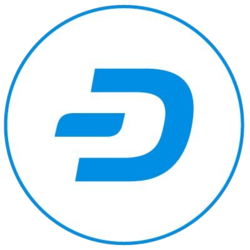Mining cryptocurrency is in the news a lot lately. What does it mean? Let’s hash it out.
To begin a discussion of mining cryptocurrency we need to start with what cryptocurrency is.
Cryptocurrency is a digital form of currency with a cryptographic underpinning that is used as a secure medium of exchange. There are literally hundreds of different cryptocurrencies with varying real-world values. Many believe it’s the future of currency.
The most famous cryptocurrency is Bitcoin. While cryptocurrencies may differ in terms of the algorithms and encryption they use, they all share one similiarity: blockchain.
Blockchain is a digital ledger of transactions that is impossible to alter. It uses hashing and a concept similar to salting to continuously complete blocks of information that chain to form an immutable ledger.
Hashing is the act of mapping data of any length to a fixed-length output. When cryptography is involved it’s a one-way function. The most popular hashing algorithm is SHA-256, which outputs at a length of 256 bits. Every hash value is unique. Even the tiniest alteration to the data being hashed caused the entire value to change.
Hashing is considered one-way because of the amount of computing power it would take to reverse-hash it. For a 256-bit output, calculate 2 to the power of 256 (2 X 2 X 2… 256 times). Your odds of finding the correct value are 1 in… the product of that equation. It would take a supercomputer thousands of years to compute that.
Now let’s fit it all together. With a cryptocurrency blockchain, as transactions occur they are broadcast and added to various private ledgers. Each one of these transactions is digitally signed for the sake of authenticity. On the other end, there are people or groups collecting these transactions and building ledgers. They are also computing to find a value that when hashed along with the ledger, produces a set number of 0s at the beginning of the hash value. That’s the portion that’s similar to salting.
Let’s say that for our example cryptocurrency, we’ve set the total to 10 0s. That means the first 10 spots of the 256-character hash value should all be 0s.
When the correct value is found, the block is closed, it’s broadcast officially and added to everyone’s blockchain, then the hash of the old block is put atop the new ledger and the process begins again. This is how blocks are created in the chain.
Mining is the act of computing the correct value to satisfy the hash function in blockchain. When it comes to cryptocurrency, a reward is provided to whoever solves for the correct value. That makes it lucrative to compute the correct value, though it takes quite a lot of power to accomplish that.
People often pool their computing power together to create mining pools and split the reward if they solve for the correct value. In other cases, hackers have been known to co-opt others’ computers and use some of their computing power – behind the scenes – to mine cryptocurrency.
Solving for the correct value is like winning the lotto. There are countless people attempting to find the value and whoever finds it first gets the reward.
When someone says “mining cryptocurrency” what they’re referring to is the act of trying to compute a specific hash value by producing a set value that, when hashed along with the block ledger, produces a specific result. This requires considerable computing power, but considering the rewards – it’s well worth it.




























